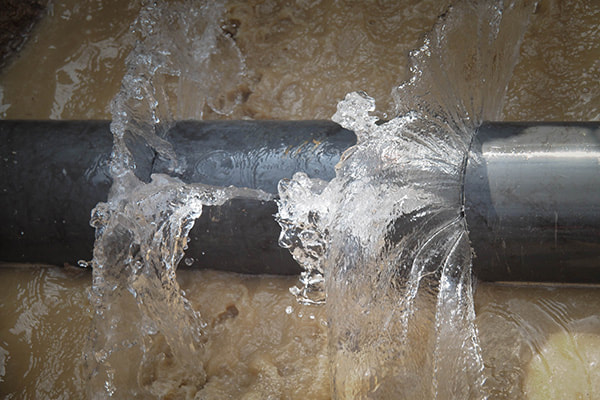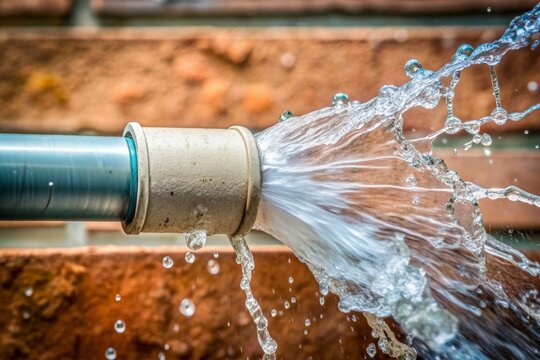How to Fix a Burst Pipe Yourself: A Step-by-Step Guide for Homeowners
How to Fix a Burst Pipe Yourself: A Step-by-Step Guide for Homeowners
Blog Article
Protecting Against Ruptured Pipeline: Crucial Tips to Safeguard Your Plumbing
Preventing burst pipes is an essential worry for homeowners, especially throughout cooler months when the threat of freezing is enhanced. Applying calculated procedures such as correct insulation, routine assessments, and preserving constant indoor temperatures can considerably minimize the possibility of pipe failure. Additionally, understanding emergency treatments equips homeowners to react quickly to potential pipes issues. However, several are unaware of the specific susceptabilities that their pipelines may deal with. Exploring these susceptabilities can supply important insights right into protecting your pipes system effectively.
Understand Pipeline Vulnerabilities
Recognizing pipe susceptabilities is necessary for effective pipes maintenance and preventing pricey damages. A number of factors add to the susceptibility of pipelines to bursts, consisting of material make-up, age, and environmental conditions. Older pipes, especially those made from galvanized steel or polybutylene, commonly deteriorate gradually, causing increased threat of leaks and tears.
Temperature variations can likewise dramatically influence pipe integrity. In colder environments, water caught in pipelines can ice up, expanding and putting in stress on the pipeline wall surfaces, which might inevitably result in a burst. Furthermore, high water pressure can strain pipes, particularly at bends and joints, heightening the probability of failing.

Insulate Pipes Appropriately
Appropriate insulation of pipelines is critical for preventing freezing and subsequent ruptureds throughout cool weather (burst pipe). Insulating your plumbing system effectively safeguards against temperature drops that can result in costly damage. Begin by identifying vulnerable areas where pipelines are revealed to exterior temperature levels, such as cellars, attics, and exterior walls
Usage foam pipeline insulation sleeves or cover insulation tape around these locations to supply a safety barrier. Guarantee that all sections of the pipes, particularly those with minimal warmth direct exposure, obtain ample insulation. Pay unique interest to joints and installations, as these are a lot more vulnerable to cold.
When protecting, it's necessary to select materials that satisfy local structure codes and are proper for the certain environment. Fiberglass insulation is often advised for its thermal resistance buildings. Furthermore, think about using warmth cable televisions or tape in extreme problems, which can be plugged in to provide supplementary warm
On a regular basis inspect protected pipelines for any type of indications of wear or damages, as jeopardized insulation can lessen its efficiency. By taking these proactive procedures, you considerably decrease the threat of pipe bursts, ensuring a trusted pipes system throughout the winter season months.
Maintain Consistent Temperature
A steady indoor temperature level is necessary for stopping burst pipes throughout the cold months. When temperature levels decrease, water within pipes can ice up, creating and expanding stress that may ultimately create the pipelines to burst.Utilizing a programmable thermostat can aid handle interior temperature levels efficiently, guaranteeing that rooms with pipes remain cozy even when the house is unoccupied.
Furthermore, it is prudent to allow taps to drip a little during extreme cool spells. This minor circulation of water can stop freezing by relieving stress within the pipes. Moreover, during specifically serious climate events, consider briefly suspending any type of nighttime problems on your thermostat to keep a consistent warm setting. By implementing these techniques, homeowners can substantially lower the risk of pipeline ruptureds and safeguard their plumbing systems against the extreme winter aspects.
Regularly Evaluate Plumbing
Routine assessments of plumbing systems are essential for protecting against burst pipelines and keeping general home honesty. Throughout these assessments, it is essential to analyze noticeable pipes for indicators of deterioration, leakages, or use.
Furthermore, inspecting joints and connections is crucial, as these points are frequently susceptible to leakages. Property owners you can try this out ought to additionally analyze water pressure degrees, as extreme pressure can stress the pipes system and enhance the danger of pipe ruptureds.
Take into consideration organizing professional plumbing inspections at least once a year, particularly prior to winter months, to guarantee your system is prepared for colder temperatures. By being aggressive in your approach, you can protect your home versus the turbulent and costly effects of ruptured pipelines.
Know Emergency Procedures
Understanding emergency situation treatments is crucial for every house owner, particularly after carrying out regular plumbing examinations. Being prepared for a pipes emergency situation can substantially alleviate damage and save prices.
Following, maintain vital devices useful. A plumbing emergency situation package should consist of a wrench, plunger, and towels, along with a site link flashlight and a container for little leaks. Additionally, consider having the contact information for a trusted plumbing readily available, should the circumstance intensify beyond your control.
If you identify a leakage or ruptured pipeline, right away turn off the supply of water and inform your plumber. Furthermore, document the damages with photographs for insurance coverage functions. burst pipe. Be aware of the indicators of possible plumbing issues, such as uncommon water pressure fluctuations or damp spots on walls
Ultimately, proactive knowledge and quick action are critical in handling plumbing emergency situations, ensuring your home stays safeguarded and decreasing prospective damage.

Final Thought
In verdict, avoiding ruptured pipelines necessitates a complex method that consists of understanding pipe vulnerabilities, correct insulation, keeping consistent interior temperature levels, routine evaluations, and expertise of emergency situation procedures. By implementing these necessary techniques, the danger blog of pipes failures can be considerably lowered, thereby making certain the long life and efficiency of the plumbing system. Positive steps not just secure versus possible damage however additionally add to overall water conservation and the defense of residential property.
In cooler environments, water caught in pipes can ice up, broadening and applying pressure on the pipe walls, which might eventually lead to a burst. When temperatures decrease, water within pipes can freeze, increasing and developing stress that may inevitably trigger the pipelines to burst. By carrying out these techniques, homeowners can substantially reduce the threat of pipeline ruptureds and safeguard their plumbing systems against the rough winter months components.

Report this page